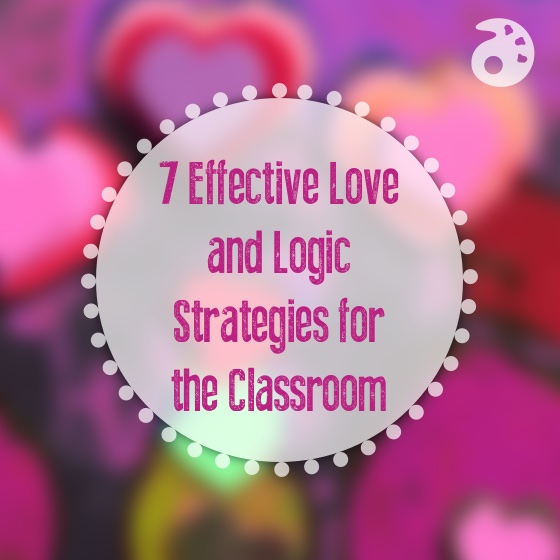We all have those students who love to argue, push our buttons or just be temperamental in general. Without the right management tools, it is difficult not to take these students’ actions personally. My first year of teaching, I sought out any and all courses in classroom management. At the time, I wasn’t confident in my teaching and management philosophy. I took a course on “Teaching With Love and Logic: Taking Control of the Classroom” by Jim Fay and David Funk. You can read about how it changed my teaching, along with other great resources, here.

The philosophy of Love and Logic is to regain control, reduce your stress level, equalize emotions and build more harmonious relationships. The keys to implementation are empathy and communicating that you care for and value the other person. I subscribe to their emails, and the website contains a treasure trove of helpful resources. Because I only see my students once a week, it seems silly to waste time arguing or engaging in negative conflict.
Below are 7 of my favorite Love and Logic strategies for the art room.
1. Go brain dead and become a broken record.
These one-liners have neutralized many tantrums and arguments over the past two years. The key is to repeat the phrase with as little emotion as possible. If a student is trying to engage you in conflict, you can try the following:
“I respect you too much to argue.”
“I’m sorry to hear that, but what did I say?” (In response to a direction).
“Thanks for sharing.”
2. Use the word, “bummer.”
I use this word when I observe a student making a poor choice or after I listen to a complaint or tattle. I also usually also pair it with an “ugh, man” sort of sound effect. You can avoid arguing, lectures, and drawn out conversations by using this one word, but be VERY careful to not sound sarcastic.
3. Walk away.
Avoid further conflict that has the potential to escalate. This technique is usually paired with one of the following statements:
“I’ll check on you when you’re calm.”
“I’ll speak with you when we’re both calm.”
4. Delay consequences.
This strategy is similar to walking away. It allows both you and the student to cool down and think clearly. Students also do more thinking and reflecting as they await a consequence. You can say something like the phrase below and then follow up with the student later.
“Bummer, I’m going to have to do something about this. I need to think about it though. Try not to worry.”
Love and Logic is a great tool for your classroom. If you’re looking to get a more comprehensive look at managing your art room, we have some great resources for you. In AOE’s course Managing the Art Room, you’ll identify the 15 keys that make the greatest difference in the classroom, and develop a comprehensive classroom management action plan that can be implemented right away.
We also have two great learning packs that directly address classroom management: Managing the Classroom and Managing Middle Schoolers.
5. Provide choices for a solution.
If you have students that are having a difficult time dealing with tough situations or making good decisions, you can help them out by offering a few solutions they can choose to pursue. In this way, you allow them to take charge of their own problems and learn to build healthy relationships with others. A phrase you might consider is:
“I’m sorry to hear that. Would you like to hear some ideas about what other people have done (or might do) in your situation?”
6. Place responsibility on the student.
This is what Love and Logic is all about. You remove yourself and your emotions. You also help your students to gain responsibility, autonomy, and problem-solving skills. You can say things like:
“I’m sorry you made that choice.”
“And what are you going to do about it?”
7. Turn your words into gold.
It’s amazing to see the difference in student responses to a phrase like, “I’ll begin when it’s quiet,” versus, “Be quiet!” Tweaking the way you word things can make a huge impact.
This is by no means an exhaustive list of all that the Love and Logic philosophy has to offer. These are just my most frequently used phrases that are applicable in a variety of situations. It is important to make the phrases your own to avoid sounding fake or scripted. Do what feels natural. It may seem like a conscious effort at first, but soon things like “bummer” will become as natural as breathing!
Do you use the Love and Logic approach at school or at home? What is your go-to phrase for neutralizing an argument?
What other behavior management strategies do you use?
Magazine articles and podcasts are opinions of professional education contributors and do not necessarily represent the position of the Art of Education University (AOEU) or its academic offerings. Contributors use terms in the way they are most often talked about in the scope of their educational experiences.





